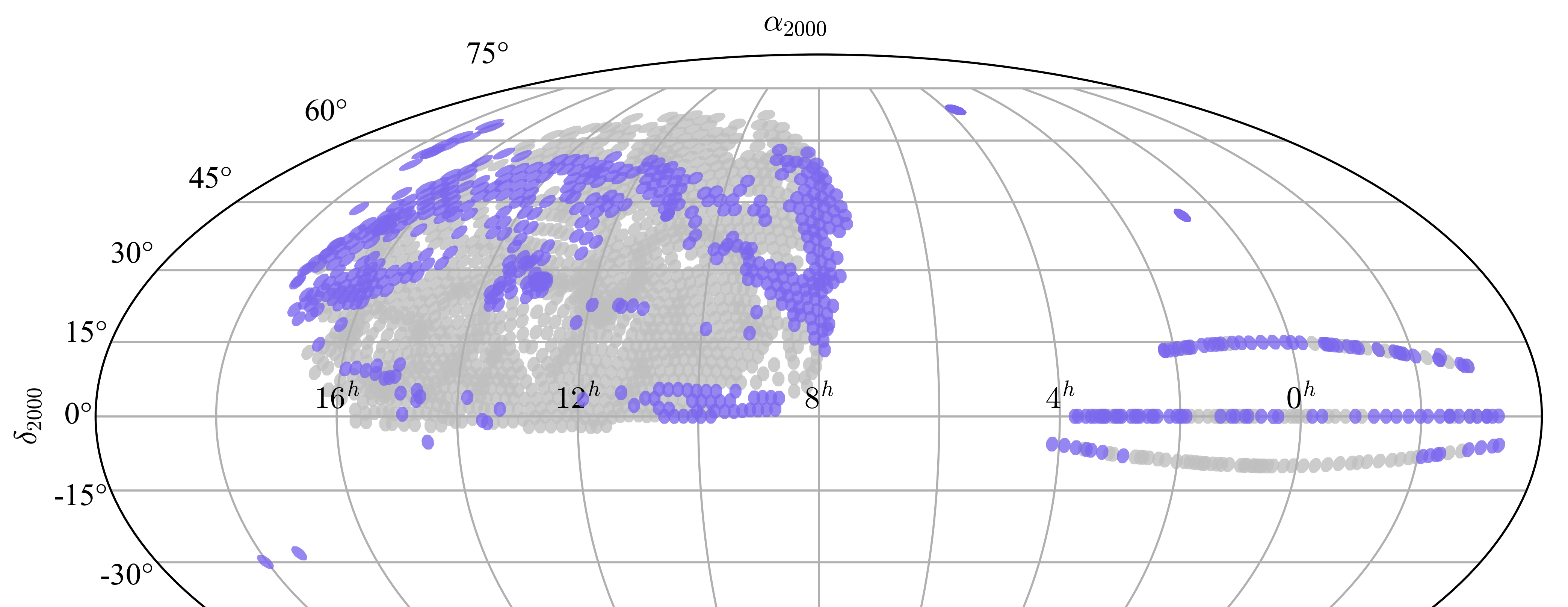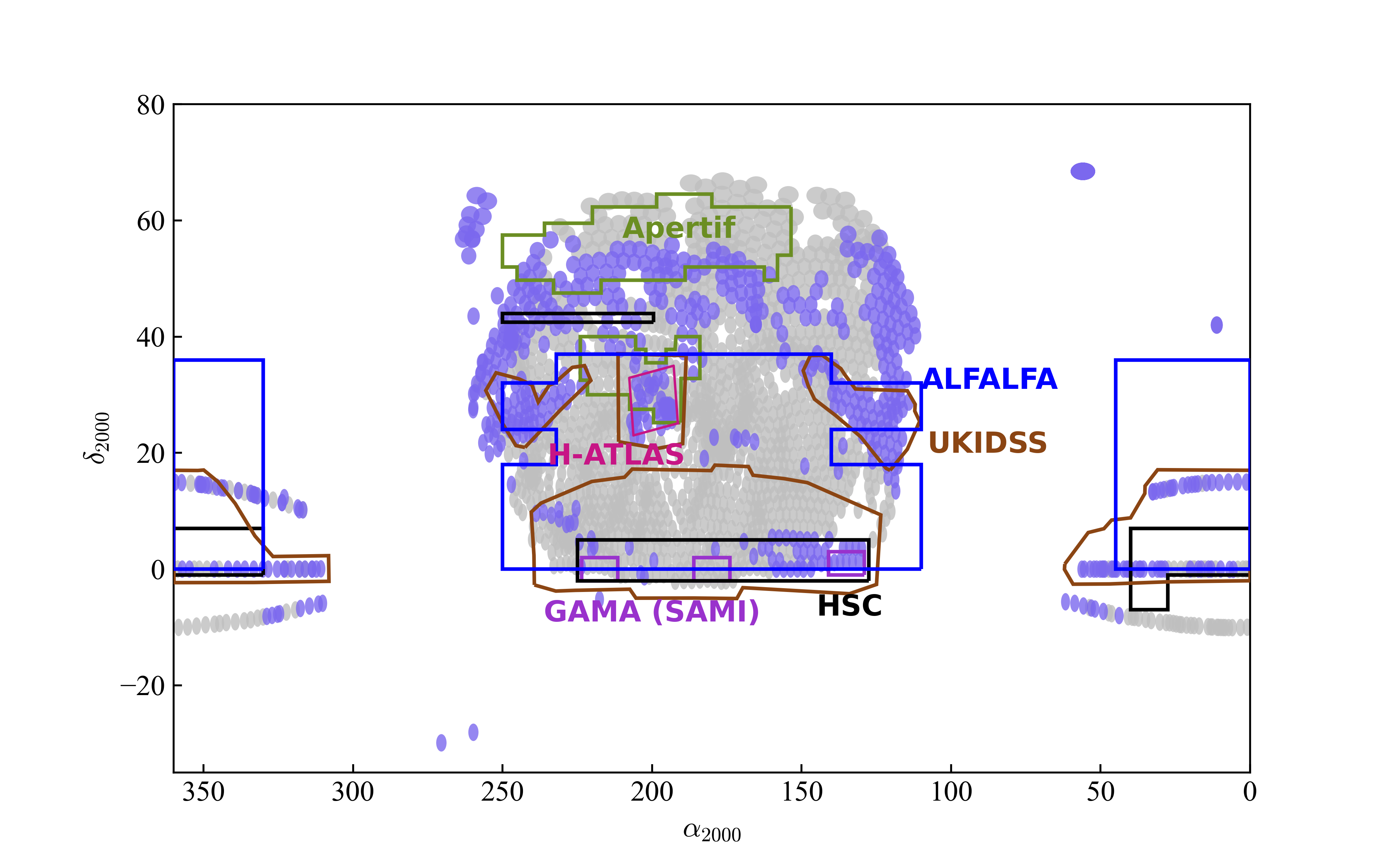Footprint
Where has MaNGA observed?
MaNGA's target selection needs galaxies with SDSS imaging and known redshifts. Therefore, the sample is selected from the NYU VAGC LSS footprint. We assign all targets selected to a number of 3-degree-diameter circular fields which match the field of view of the telescope. Our final field list (what we refer to as “tiling catalogue”) contains ~1800 of these fields (tiles). After six years of observations MaNGA obtained data of 610 such tiles.
The grey symbols in the figure above show the distribution of all our potential fields (tiles) in the NYU VAGC LSS footprint. The blue symbols indicate the fields for the 610 plates whose data are being released in DR17. These exclude all-sky plates and standard star plates (see special plates page for detail). MaStar plates as well as some ancillary program plates are not included in the figure. The observed plates are largely concentrated in a band around declination ~45 degrees. Fields around that declination are easier to observe, as they reach high altitude in the sky but not too close to the zenith where tracking is more challenging for an Alt-Az telescope. These fields also have longer visibility windows which made them easier to schedule, given the observing strategy for MaNGA (see Law et al. 2015).
How to get the list of observed plates?
Python
It is possible to obtain a list of all the observed plates from the drpall file, as well as select plates that contain certain targets in which you are interested. Using Astropy and Numpy to obtain a list of all reduced plates, you can do
from astropy.table import Table
import numpy as np
drpall = Table.read('drpall-v3_1_1.fits')
plates = np.unique(drpall['plate'])At this point you may want to reject plates without galaxy targets, for instance:
targets = drpall[(drpall['mngtarg1'] > 0) | (drpall['mngtarg3'] > 0)]
plates = np.unique(targets['plate'])
print(len(plates))
> 673
Note that this number is higher than the 610 main survey plates since it includes special and ancillary program plates. If you are interested in finding all plates that contain ancillary targets for a specific program, you can use the manga_target3 column (see more about bitmasks). For instance, the bit for galaxies previous observed with the DiskMass program is 16. To get the plates for the three observed targets in DR17, we do
targets = drpall[drpall['mngtarg3'] & 1<<16]
plates = np.unique(targets['plate'])
IDL
Read the drpall, and cull it to only data cubes with non-zero manga_target1 or manga_target3 bits (i.e., ordinary galaxies and ancillary programs).
drpall=mrdfits('drpall-v3_1_1.fits',1)
drpall=drpall[where(((drpall.mngtarg1 ne 0)or(drpall.mngtarg3 ne 0))
print,n_elements(drpall)
> 11236Now if we want to find the DiskMass galaxies we search for manga_target3 bit 16:
diskmass=where((drpall.mngtarg3 and 2L^16L)ne 0)
print,drpall[diskmass].plateifu
> 10494-12705 10510-12704 8566-12705 8567-12701 8569-12705 8570-9101 8939-12704



